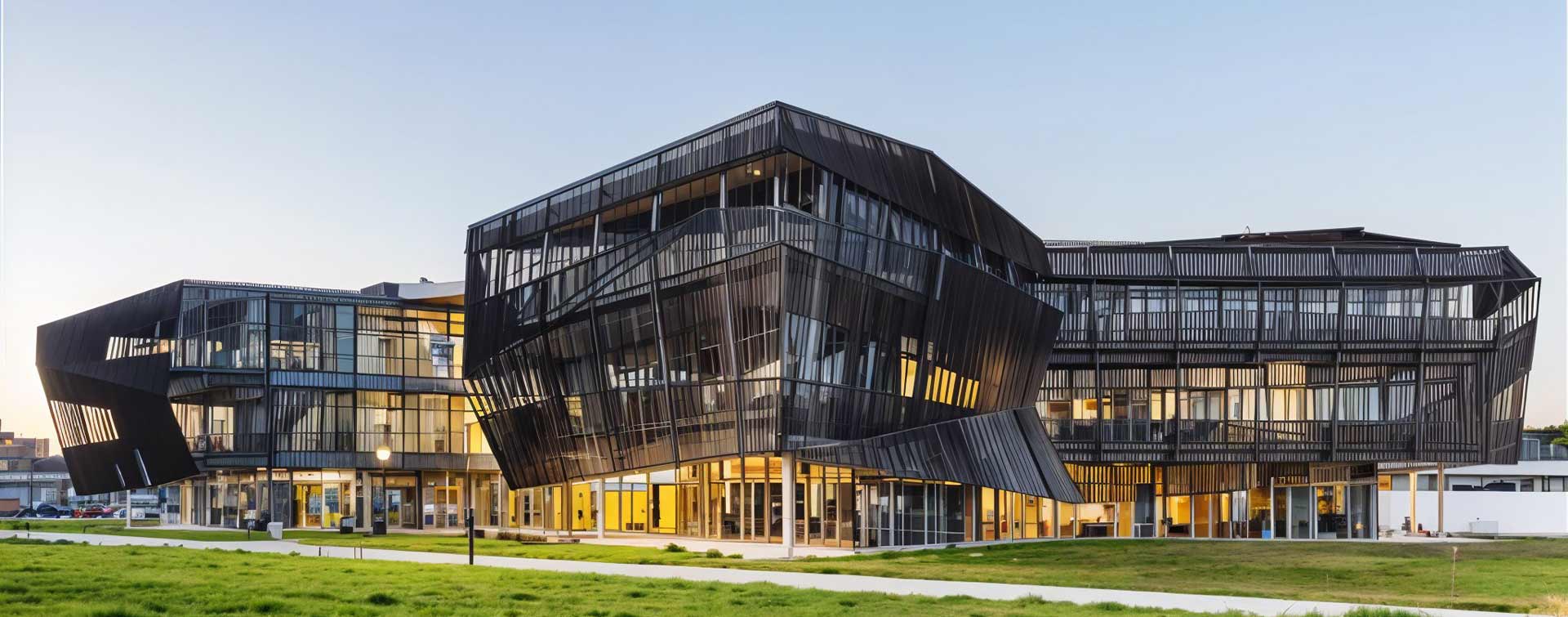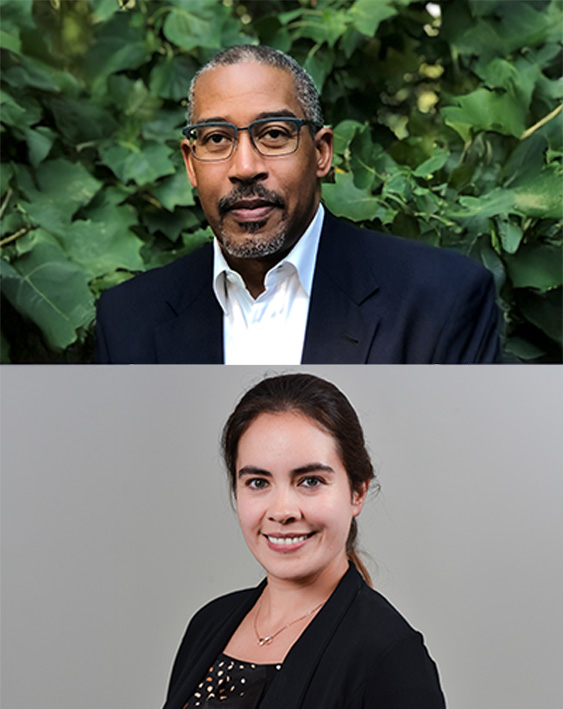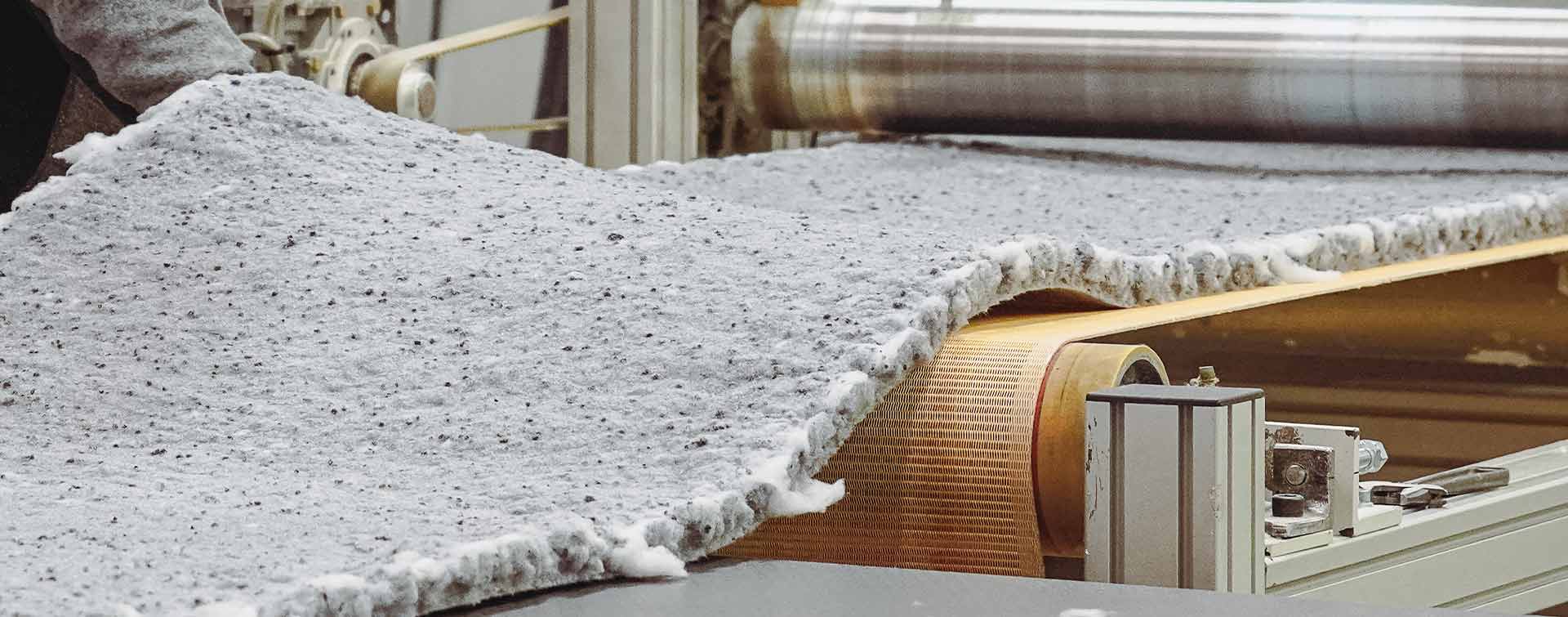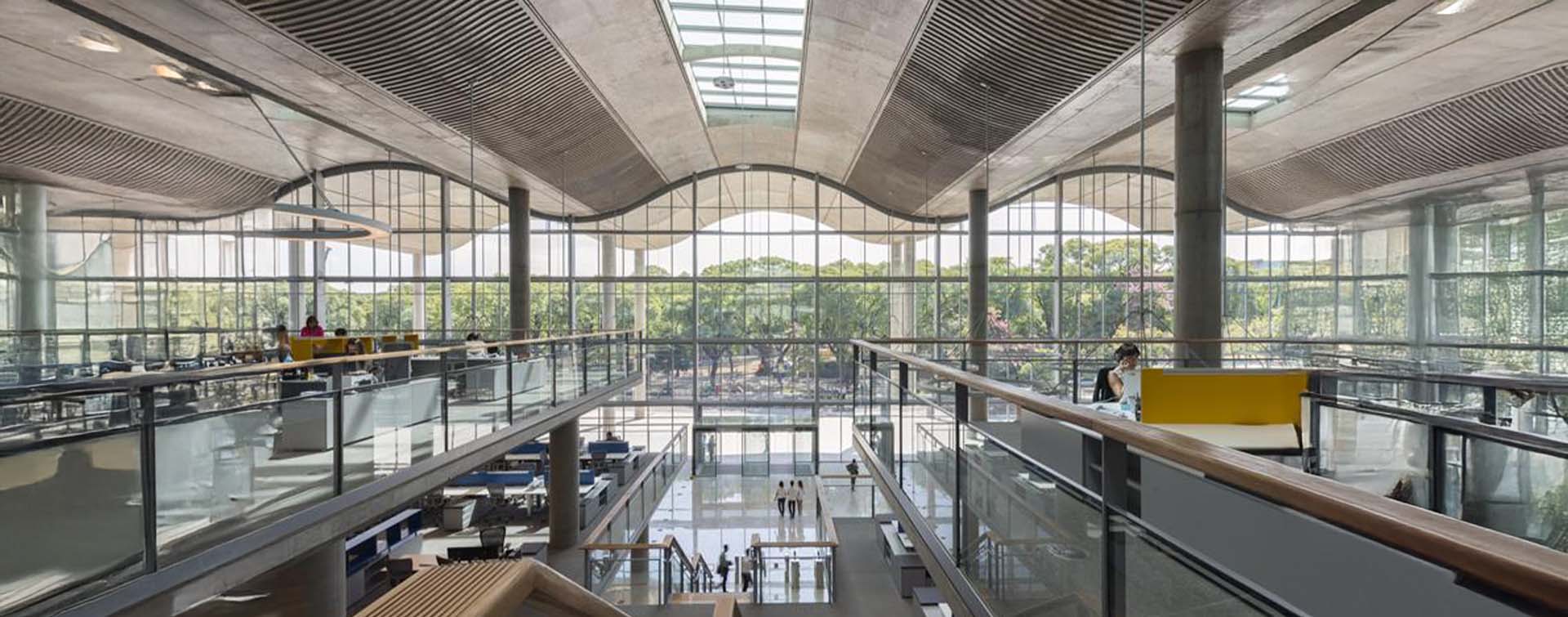 14 min
14 min
Roland Pearson, Vice president and Executive director of the Terwilliger Center for Innovation in Shelter, and Carolina Montano Owen, Technical Lead Sustainable Buildings at the World Green Building Council, share their vision this pivotal question.
What does “innovation” mean for sustainable construction? What challenges must it address?
C. M. O. : Sustainable construction, like sustainability in general, is an ever-evolving concept. As such, innovation is inextricably linked to its progress. Achieving true sustainability requires finding solutions capable not only of fostering economic growth but also of ensuring environmental preservation and taking social impacts into account. Although we have made significant progress, we have not yet fully achieved this delicate balance. That is why innovation remains critical. Efficiency has long been at the heart of innovation objectives for designers and builders, as optimizing time and resources is crucial to business success. However, at a time when climate events are becoming more frequent and having a greater impact on infrastructure, there is an increased emphasis on two critical factors: decarbonization and resilience. Together, these changes are giving greater impetus to innovation in favor of more sustainable construction practices.
R. P. : Innovation for sustainable construction obviously involves continuing to invent new solutions – from low carbon to more resilient materials. But this is not enough. If not deployed at scale these innovations don’t have enough impact. Take the housing sector: Habitat for Humanity International has been committed to affordable housing around the world for almost fifty years. While our model has historically been based on building homes with communities and volunteers, we realized about ten years ago that this approach alone would not be enough to meet the global need. Today, more than 2.8 billion people still lack adequate housing, according to the UN. It is this reality, and because we are convinced that innovation is essential to meeting this challenge, that Habitat for Humanity created the Terwilliger Center for Innovation in Shelter. At the Terwilliger Center we don’t directly build or focus solely on new materials and designs. Instead we aim to transform markets to better serve low-income communities. After all, the key issue is not the lack of innovation but the failure of market systems to provide affordable housing for those who need it most. Our mission is therefore to use innovation to drive market change and create scalable solutions.
Do we need to reinvent everything to build sustainably?
C. M. O. : I don’t think we need to reinvent the wheel. Sometimes, it’s about looking at solutions that have worked in the past but may have been overlooked; or identifying solutions that are working in other parts of the world. We simply need to adapt those ideas through an iterative process of learning and collaboration. If something works elsewhere, why can’t it work for us? The way buildings were designed in the past lacked digital tools, and the process involved a lot of trial and error to make buildings more robust. Now, with the advent of digital tools, one of the biggest innovations is the rapid advancement in building design. These tools are evolving and becoming more integrated, making our designs more reliable and efficient. Cities are increasingly using data for future scenarios to assess building performance and enhance efficiency, supporting carbon reduction goals while prioritizing resilience. In essence, the solutions were always there; innovation is just helping us take them to the next level.
R. P. : At the Terwilliger Center for Innovation in Shelter, our approach isn’t centered on the next breakthrough design or product; rather, we focus on transforming systems and markets to more effectively serve low-income populations. This often means helping industry players rethink supply chains, optimize cost structures, and reach new market segments, specifically low-income households. Personally, I feel more comfortable with the word ingenuity than innovation. Ingenuity is about taking something existing and adapting it, tweaking it to serve a new purpose. Take our work in healthy housing and vector-proofing, for example. We didn’t invent ultra-white paint, screening, or plaster. These are basic materials, yet scaling such materials is crucial to addressing the qualitative housing deficit. Some might argue that this isn’t really innovation – and I’m okay with that. What my team has done is use ingenuity to figure out how to combine these existing materials in the most effective way. We’ve brought together the right technologies, materials, and designs to create affordable, accessible, and sustainable solutions for small contractors and the communities we care about. We didn’t create new things, but we made them work together in a new way. And to me, that’s the real potential for scaling impact.
AN EXAMPLE OF AN INNOVATIVE GLOBAL APPROACH 
RAVENNA MUNICIPAL ADMINISTRATION OFFICES. The design of this building is based on optimizing energy efficiency, making the most of the characteristics of the building envelope. Particular attention was thus paid to light and natural air circulation. This is reflected in the use of green roofs, large insulating windows and the spectacular architecture of the facade, which acts as a sunshade. From the earliest design phases, the use of environmentally friendly materials was a priority. In addition, each component can be replaced or serviced individually, without the need for complete disassembly. This approach optimizes the overall maintenance and management costs throughout the project life cycle. © lorenzoBartoli for Saint-Gobain
In your opinion, which innovative approaches to sustainable construction have had the most significant impact and transformative effects?
C. M. O. : There have been significant innovations in building design in recent years. Starting with materials, an area in which remarkable progress has been made in creating more sustainable options. Research and development have also led to the optimization of resources used in both the products themselves and their manufacturing processes – especially energy, water. There is also a growing demand for environmental product declarations (EPDs) to ensure materials are safe throughout their life cycle –from installation to operation and even demolition.
With regard to construction processes, major improvements have been made to reduce waste and enhance recycling efforts. For example, tracking water usage during construction – a practice not commonly done in the past – is now becoming more widespread, as companies recognize its importance. When it comes to building design, modern life cycle assessments are gaining traction. Concepts such as modular construction make it easier to repurpose building parts, ensuring their continued value. Buildings designed with resilience in mind, i.e. those that can be easily rebuilt or adapted after a disaster, are becoming increasingly common. This makes it possible to respond more quickly and flexibly to challenges. All these innovations are helping to transform our approach to construction, making it more sustainable and adaptable.
R. P. : Creating pathways for low-income households to access existing innovative, high-quality construction solutions is a crucial, yet often overlooked, aspect to transforming the sustainable construction market. Changes in housing finance policy and including housing explicitly in green taxonomies are two approaches to this. Supporting financial institutions to access long-term capital and develop housing-focused loan products is also crucial. One of Habitat’s biggest successes in this area has been the MicroBuild Fund, a $100 million initiative focused on financial services for affordable housing. It leveraged over $1.2 billion in capital across 33 countries, benefiting nearly 250,000 households. The real success lies in the 10-to-1 leverage ratio(1): our $100 million attracted additional investments from financial institutions who saw affordable housing as a profitable business. As a result, affordable housing finance has expanded significantly, and institutions are now continuing these efforts, recognizing the sector as viable even without our funding. This marks a clear transformation in the industry.
(1) A financial leverage mechanism where each dollar invested generates 10 dollars of additional investment.
What factors are key to scaling these innovative solutions?
C. M. O. : One of the key drivers of innovation for sustainable construction is probably certification systems. At one point, we needed clarity on terms like “high-performance building” – what did that really mean? Certification systems have played a key role in setting these standards globally, considering not just the impact of buildings on users but also their broader effect on communities. This shift has driven major progress in many regions globally. In South America, for instance, the green building movement gained traction through the private sector, which saw the need for buildings that perform better in operation. These buildings reduce resource consumption, particularly energy and water, while also enhancing productivity and improving the well-being of their occupants.
Scaling up sustainable construction innovations also involves policy development. Recent initiatives, such as the Buildings Breakthrough, bring together experts to help governments create practical roadmaps for achieving their sustainability goals. Without these financial incentives, it would be difficult to achieve widespread adoption.
R. P. : Achieving scale for sustainable construction is essential. It requires a concerted effort from all stakeholders to drive meaningful change. A market systems approach recognizes that housing – and sustainable construction – markets don’t operate in isolation. It is crucial for more people to apply this approach and begin to account for factors such as consumer behavior, regulatory frameworks, and incentives that take into consideration social impact. There are many companies demonstrating that solutions work when we focus on collaborating with communities. We rely on the demonstration effect from, for example, leveraging pilot projects rather than relying on theoretical research. Scaling up solutions also means ensuring that they are suitable for communities by taking into account factors like affordability, demand, and local preferences. A human-centered design approach to ensure our solutions are effective, scalable and lead to broader community benefits is extremely valuable.
Ultimately, is cultural change the key to true innovation in sustainable construction? How can it be initiated?
C. M. O. : Innovation in sustainable construction involves both tangible advancements, like new materials and tools, and a shift in mindset. This mindset shift is particularly important in concepts like circularity. While many people associate circularity with waste management and recycling, it’s essential to change the perception of secondary materials. For example, people often prefer new products over recycled ones, but manufacturers can help by providing certifications that prove recycled materials perform just as well as new ones. Changing how we view materials – seeing them as refurbished rather than waste – is key to shifting demand and advancing sustainability.
R. P. : If you asked people on the street what they think innovation means – not necessarily in housing but in general – many would probably picture an app or something new they haven’t seen before. When you bring it into the construction world, it might be something like a new material, a technology that turns plastic into bricks, or a coating that improves cooling. These innovations are certainly part of the picture, but the real game-changer is something that addresses the needs of the millions who still lack housing. And this shift is more about a cultural change. It’s a shift in how we value the input of poor and low-income communities, considering their perspectives when designing or developing new solutions. In the self-build market, the challenge is more complex due to the fragmented nature of market actors, like small contractors and local businesses. The media can be a powerful tool to aid in this. For example, in Kenya, over 1 million weekly viewers tuned into Tujenge – Build it Better, an original edutainment show co-developed by the Terwilliger Center and East Africa’s Nation Media Group to increase understanding of construction challenges and techniques.









